A Single-Neuron: Current Trends and Future Prospects
- PMID: 32585883
- PMCID: PMC7349798
- DOI: 10.3390/cells9061528
A Single-Neuron: Current Trends and Future Prospects
Abstract
The brain is an intricate network with complex organizational principles facilitating a concerted communication between single-neurons, distinct neuron populations, and remote brain areas. The communication, technically referred to as connectivity, between single-neurons, is the center of many investigations aimed at elucidating pathophysiology, anatomical differences, and structural and functional features. In comparison with bulk analysis, single-neuron analysis can provide precise information about neurons or even sub-neuron level electrophysiology, anatomical differences, pathophysiology, structural and functional features, in addition to their communications with other neurons, and can promote essential information to understand the brain and its activity. This review highlights various single-neuron models and their behaviors, followed by different analysis methods. Again, to elucidate cellular dynamics in terms of electrophysiology at the single-neuron level, we emphasize in detail the role of single-neuron mapping and electrophysiological recording. We also elaborate on the recent development of single-neuron isolation, manipulation, and therapeutic progress using advanced micro/nanofluidic devices, as well as microinjection, electroporation, microelectrode array, optical transfection, optogenetic techniques. Further, the development in the field of artificial intelligence in relation to single-neurons is highlighted. The review concludes with between limitations and future prospects of single-neuron analyses.
Keywords: artificial intelligence; electrophysiological recording; isolation; mapping; micro/nanofluidic devices; microelectrode array; single-neuron models; therapy; transfection.
Conflict of interest statement
The authors declare no conflict of interest.
Figures

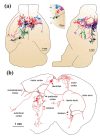


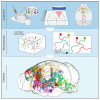
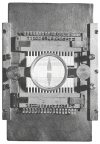






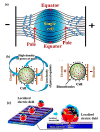
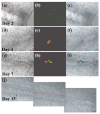
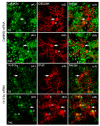

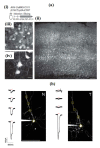


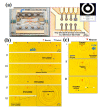
Similar articles
-
Microfluidic platforms for single neuron analysis.Mater Today Bio. 2022 Feb 16;13:100222. doi: 10.1016/j.mtbio.2022.100222. eCollection 2022 Jan. Mater Today Bio. 2022. PMID: 35243297 Free PMC article. Review.
-
In Vivo Observations of Rapid Scattered Light Changes Associated with Neurophysiological Activity.In: Frostig RD, editor. In Vivo Optical Imaging of Brain Function. 2nd edition. Boca Raton (FL): CRC Press/Taylor & Francis; 2009. Chapter 5. In: Frostig RD, editor. In Vivo Optical Imaging of Brain Function. 2nd edition. Boca Raton (FL): CRC Press/Taylor & Francis; 2009. Chapter 5. PMID: 26844322 Free Books & Documents. Review.
-
Neuroelectrophysiology-compatible electrolytic lesioning.Elife. 2024 Sep 11;12:RP84385. doi: 10.7554/eLife.84385. Elife. 2024. PMID: 39259198 Free PMC article.
-
Single-Cell Visualization Deep in Brain Structures by Gene Transfer.Front Neural Circuits. 2020 Nov 19;14:586043. doi: 10.3389/fncir.2020.586043. eCollection 2020. Front Neural Circuits. 2020. PMID: 33328900 Free PMC article.
-
Fast optical measurement of membrane potential changes at multiple sites on an individual nerve cell.Histochem J. 1998 Mar;30(3):197-216. doi: 10.1023/a:1003299420524. Histochem J. 1998. PMID: 10188927
Cited by
-
GLP-1 Suppresses Feeding Behaviors and Modulates Neuronal Electrophysiological Properties in Multiple Brain Regions.Front Mol Neurosci. 2021 Dec 17;14:793004. doi: 10.3389/fnmol.2021.793004. eCollection 2021. Front Mol Neurosci. 2021. PMID: 34975402 Free PMC article. Review.
-
Microfluidic Based Physical Approaches towards Single-Cell Intracellular Delivery and Analysis.Micromachines (Basel). 2021 May 28;12(6):631. doi: 10.3390/mi12060631. Micromachines (Basel). 2021. PMID: 34071732 Free PMC article. Review.
-
Neuromorphic algorithms for brain implants: a review.Front Neurosci. 2025 Apr 11;19:1570104. doi: 10.3389/fnins.2025.1570104. eCollection 2025. Front Neurosci. 2025. PMID: 40292025 Free PMC article. Review.
-
Single-Cell Analysis.Cells. 2020 Aug 29;9(9):1993. doi: 10.3390/cells9091993. Cells. 2020. PMID: 32872495 Free PMC article.
-
Single neurons on microelectrode array chip: manipulation and analyses.Front Bioeng Biotechnol. 2023 Sep 27;11:1258626. doi: 10.3389/fbioe.2023.1258626. eCollection 2023. Front Bioeng Biotechnol. 2023. PMID: 37829565 Free PMC article.
References
-
- Santra T.S., Tseng F.-G. Handbook of Single Cell Technologies. Springer Nature: Singapore Pte. Ltd; Singapore: 2018.
-
- Santra T.S., Tseng F.-G. Micro/Nanofluidic Devices for Single Cell Analysis. J. Micromach. 2014;5:154–157. doi: 10.3390/mi5020154. - DOI
Publication types
MeSH terms
Grants and funding
LinkOut - more resources
Full Text Sources

